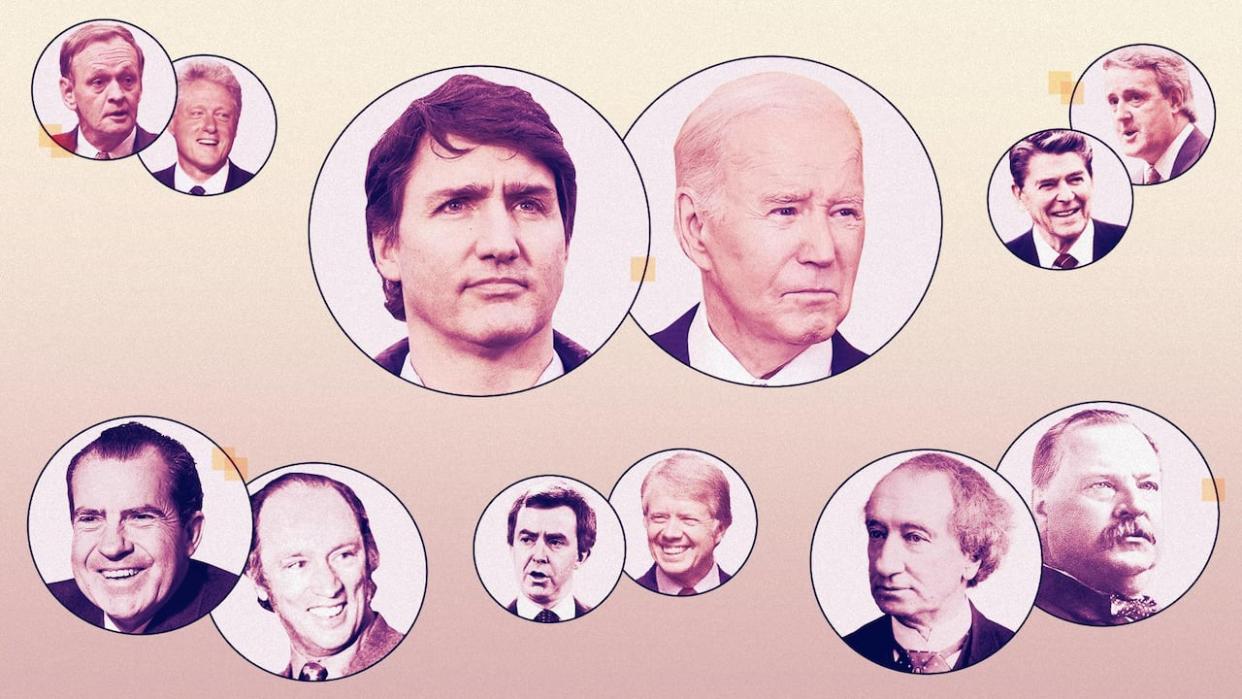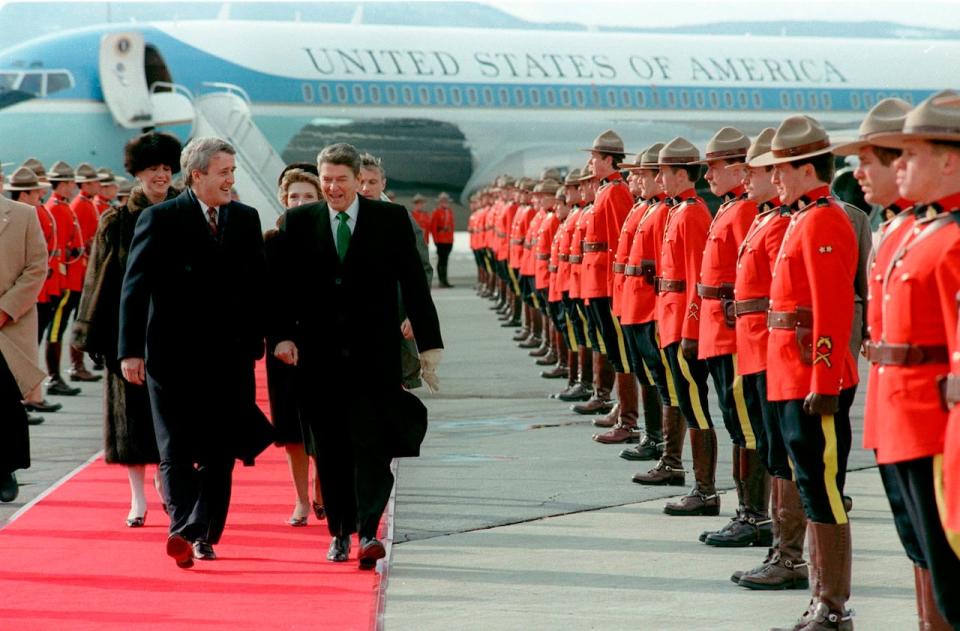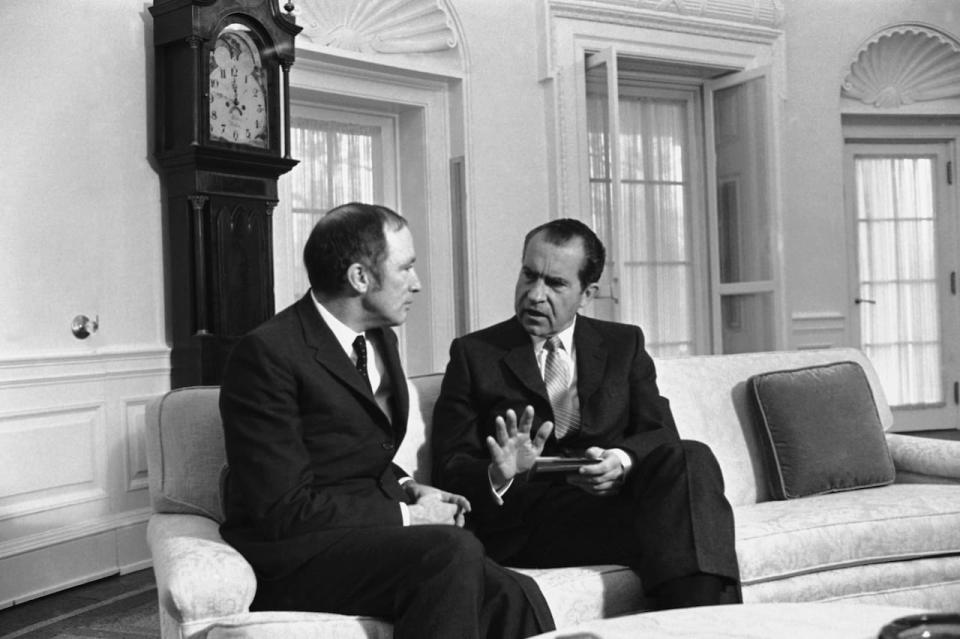U.S. presidents are older than ever while Canada's PMs are getting younger. Why?

- Oops!Something went wrong.Please try again later.
- Oops!Something went wrong.Please try again later.
- Oops!Something went wrong.Please try again later.
- Oops!Something went wrong.Please try again later.
Because time hasn't stopped, Joe Biden remains the oldest president in U.S. history. The current president's advanced age punctuates a long-term trend that shows presidents are generally getting older.
However, the same can't be said about Canada's prime ministers.
An analysis of leader ages on both sides of the border shows an upward trend in the age of leaders in the U.S. when elected.
The average age of presidents elected between 1875-1899 was 53, while in the same time period, the average prime minister age was 64.
Fast forward to the last 25 years, and that average is 63 for presidents and 52 for prime ministers.
The trend in the U.S. is emphasized by former president Donald Trump (age 70 at inauguration) and President Joe Biden (78). Among all candidates in this year's U.S. election, including long-shots and third-party options, just two out of seven are under 70 years old.
In Canada, the downward trend in the prime minister's age may well continue. If an election were called today, 52-year-old Justin Trudeau — whose 2015 campaign put heavy emphasis on the candidate's youthfulness — would now be the oldest of the major party leaders.
Why is that?
While there are likely many reasons for the differing trends, Gerald Baier, associate professor at the department of political science at the University of British Columbia in Vancouver, is quick to point to one thing: The high cost of campaigns in the U.S.
"The ability to make it to a presidential nomination, and then to win a presidency … is so money-intensive that it takes longer, so people have to be older," he said. Meanwhile, in Canada, the price of mounting a party leadership bid is not nearly as high.
Semra Sevi, assistant professor at the department of political science at the University of Toronto, points to Canada's electoral system, which gives more power to party members to pick a leader, whereas the presidential systems give parties less control over candidate selection.
"Rather than prioritizing extensive political experience, Canadian parties often value qualities like likability, charisma, and public recognition in their leaders. This has made it easier for more inexperienced politicians to move up the ranks within political parties," said Sevi, who has done substantial research on demographics in Canadian politics.
Age gap between leaders
We're living in a time when the age gap between president and prime minister has never been wider — 29 years.
While it's an interesting bit of trivia, history indicates that such a gap may not be all that important.
Baier points to a high-watermark of president-prime minister relations: The Ronald Reagan-Brian Mulroney era, when the president was 28 years older than the prime minister. The amicable leaders saw eye-to-eye on many things and the relationship helped lay the groundwork for the Acid Rain Treaty and the Canada-U.S. free trade agreement.
"They really connected," Baier said.

Prime Minister Brian Mulroney and U.S. President Ronald Reagan walk past a line of Royal Canadian Mounted Police, March 17, 1985, at the Quebec City airport. Following are Mrs. Mila Mulroney and Mrs. Nancy Reagan. (Paul Chiasson/The Canadian Press)
On the flipside, Pierre Trudeau and Richard Nixon had a famously frosty relationship. The age gap between them was only about six years, but their ideologies were miles apart.
Trudeau told the press in 1971 that the relationship with Nixon was "not one of intimacy and great fellowship." About a month after Trudeau said that, Nixon referred to Trudeau as a "pompous egghead," as heard in taped conversations that surfaced decades later.
In modern times, Justin Trudeau has also had to navigate cool personal relationships with U.S. heads of state. In 2019, Trump called Trudeau "two-faced" after the prime minister was caught making unflattering comments about the president. Biden's early time in office was also tumultuous for the prime minister, thanks to the canceling of the Keystone XL pipeline and a campaign that emphasized protectionist economic measures for the U.S.

U.S. President Richard Nixon conferred on March 24, 1969 in his White House office in Washington with Canadian Prime Minister Pierre Elliott Trudeau. (The Associated Press)
Does age matter?
With age comes wisdom, but it may also come with genuine concern, UBC's Baier said. "As aging happens … there are health concerns that go along with that, and we're never getting a clear idea of the state of health of the president or prime minister."
Polling has clearly shown voter concern around the issue in the U.S. About half of those polled by YouGov last year said age is more of a hindrance than an asset. A clear majority think there should be an age limit for those who serve as president.
Putting health aside, a lack of young representation for any group poses a challenge to the democratic process.
"It is essential for democracy that all demographic groups in society are fairly represented in institutions such as parliament," Sevi said. "However, despite comprising about 20-30 per cent of the voting age population globally, young people are consistently underrepresented in political processes."
Additional design by Wendy Martinez

